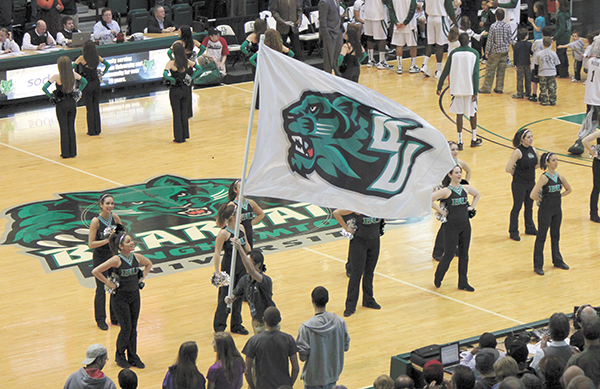
For an animal that many people have never heard of, the bearcat has caused a significant number of legal problems for sports teams across the nation.
High school and semi-professional sports teams represented by a bearcat mascot have had to alter their logos because of similarities with the Binghamton University Bearcat logo.
“Our logo is protected with a ‘TM’ trademark logo, meaning we intend to copyright it at a later point,” explained Jim Norris, interim athletic director at BU.
Trademark rights may be used to prevent others from using a similar mark, but not to prevent others from making the same goods or from selling the same goods or services under a clearly different mark.
The University has been using the Bearcat logo since the late 1990s, when the University retired its former “Colonial” nickname and identity, Norris said. This change coincided with BU’s shift to Division I sports.
“The BU Bearcat logo is protected and when we hear about someone or [an] organization using it without our permission, we contact the individual or group through Strategic Marketing Affiliates, who handles the licensing of our logo. SMA will then send them a cease and desist notification,” Norris said.
Jack Shepard, the former president of the Ohio River Bearcats, a semi-professional football team based in Evansville, Ind. received such a letter from BU two years ago.
“Our use of the bearcat as a mascot was short-lived. We used it for two years, until we received a letter from Binghamton telling us we weren’t allowed to use it anymore,” Shepard said.
Shepard admitted that the Ohio River Bearcats’ logo was similar to BU’s, and said the team had no qualms about rectifying the situation.
“We weren’t aware that is where it had derived from,” he said. “We changed it within the following year, but then the University of Cincinnati Bearcats said our logo was too similar to theirs. They sent us a cease and desist letter.”
The University of Cincinnati, which has used the bearcat as its mascot since about 1920, has also had problems with teams using mascot logos similar to its own.
Greg Hand, associate vice president of public relations at UC, explained that its issue lies with its athletic logo, a device called the “C-paw.”
“The ‘C-paw,’ an underlined letter C with claws coming out of it, has been picked up and used by many high schools,” Hand said. “Almost any school that has a C in it, like Central, Columbus or Colorado at one time or another has put claws and an underline on their logo. So we do work with a licensing organization to keep control of that.”
Shepard’s team decided not to take on the challenge of creating a third bearcat logo.
“We are now the Evansville Enforcers,” Shepard said.
As of now, the measures taken by BU seem to have been effective.
“At this time, we are not aware of any other school, university or organization that uses our exact logo,” Norris said.


